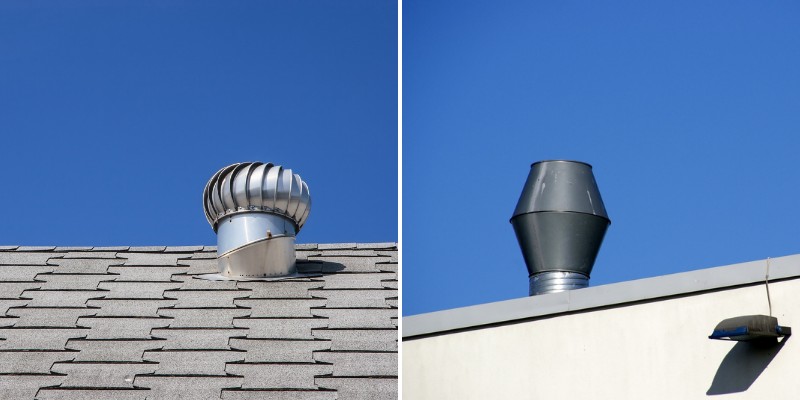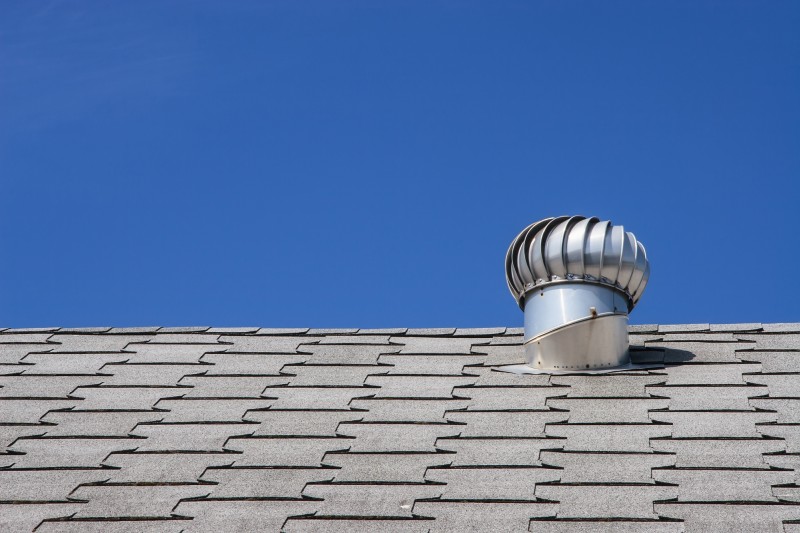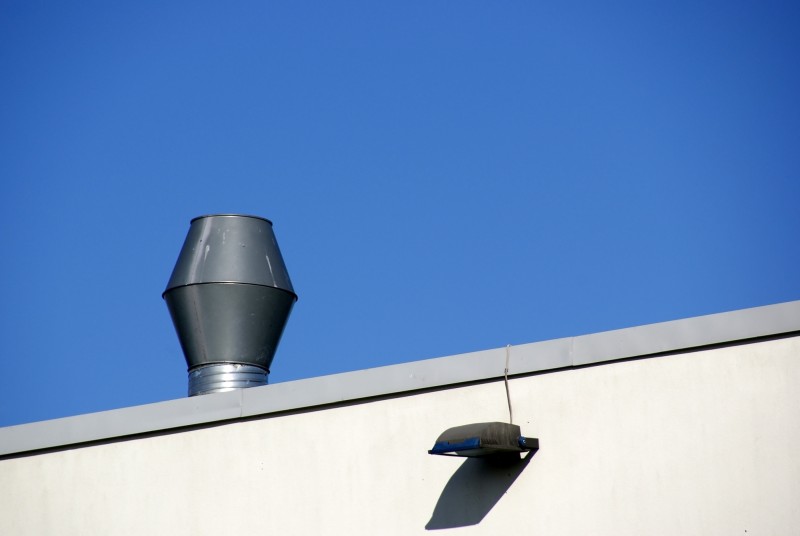Attic fans weren’t common when Frank Rowley conducted his 1936 study about the amount of damage non-ventilated attics can suffer as a direct result of little to no airflow. Rowley built three huts to prove that attics lacking ventilation triggered extreme moisture build-up.

The hut with natural air circulation showed little moisture accumulation while the hut with an attic fan proved as effective as all-natural air flow; in some cases, better.
Rowley’s findings were published by the Federal Housing Authority in 1942, setting the standard for dealing with the space between roofs and top floor ceilings.
Today’s systems may be more sophisticated, but their purpose remains the same: Cooling hot attics by drawing in outside air while pushing out hot air.
Attic fans circulate air to decrease moisture build-up in attics that have the potential to trigger mold development and weaken structural roof elements that can lead to higher utility bills.
In this article we will examine the pros and cons of attic fans and discuss each one of them below.
Main Pros of Attic Ventilation Fans
-
Protect asphalt roofs.
When homeowners rely upon passive ventilation systems requiring no air circulation mechanism – especially if soffit venting is missing, deteriorated or otherwise ineffective – roofs can suffer irreparable damage.

In concert, attic fans and vents maintain the integrity of asphalt roof shingles that are petroleum-based and thus subject to intense heat that can lead to faster shingle deterioration, premature aging and warping that can shortcut the viability of roof shingles.
-
Keep homes cooler.
Lowering temperatures in an attic as a result of heat rising from below keeps residents much more comfortable than they would be without an attic fan.
When the sun heats up the roof, attics become “heat traps,” according to an Oregon State University study that compares this condition to the interior environment of a car in hot weather with all windows rolled up.
Even after the sun sets, hot attic air can remain trapped, upping temperatures throughout the home thus air conditioning units must work harder to compensate.
-
Stop mold growth.
Attics that remain sealed without benefit of continually circulating air when weather is cold, wet or humid are prime targets for the development and proliferation of mold spores.
Moisture condensation accelerates in this sealed environment which can be exacerbated by darkness that encourages mold growth, as a direct result of wood in attics that serve as a food source for mold growth.
Running an attic ventilation system keeps the environment dryer so conditions for mold growth lessen or disappear.
-
Prevent ice damming.
For homeowners fortunate enough to live in southern climates, ice damming is not an issue, but in northern climates, roofs can easily fall victim to the ravages of ice damming.
This occurs when warm air in the attic melts snow on the roof and it leaks into the attic. As snow refreezes, it forms ice blockages around eaves and along roof edges.
At its most extreme, ice damming can damage roof sheathing, wood joists and drywall in addition to promoting mold growth.
Main Cons of Attic Ventilation Fans
-
Attic fans can cause carbon monoxide buildup.
Unless a home is outfitted with less-powerful solar-powered or turbine attic fans, installing an electric attic fan system has the potential to trigger carbon monoxide infiltration from the attic to rooms below.

What causes this? Electric attic fans create “negative air pressure” that causes the fan to pull combustion gases into the interior of the home from water heaters or furnaces rather than venting the carbon monoxide to the home’s exterior.
Carbon monoxide detectors in homes with gas burning appliances are critical safeguards to prevent carbon monoxide poisoning.
-
Attic fans can increase homeowner energy costs.
While contemporary engineers have found ways to make attic fan systems more efficient, say U.S. Energy Department (USED) authorities, “energy required to run the attic vent fan offsets any gains by increasing attic ventilation as a result of the fan.”
When attic fans “pull conditioned air from the home’s interior,” decreased energy gains result.
Homeowners may also have to deal with installation and maintenance expenses that come from a fan installation.
The USED estimates that it takes about 30 years to recoup attic fan costs, despite the fact that a main reason for installing one is energy savings.
-
Attic fans can increase roof leak risks.
While the improper installation of flashing or shoddy roof maintenance remain the most often-reported reasons for leaky roofs, any time a roof is breached to install an attic fan, leak risks increase.
Roofers may recommend gable-style fans mounted vertically on the side of the roof over horizontal roof fan systems.
According to professionals at FloridaDisaster.org, roof-penetrating installations are “not designed to prevent water intrusion” that goes beyond normal rainfall, which is why homeowners in hurricane-prone areas may find language about the risk of leaks in the contracts they sign.
-
Attic fans aren’t always worth the bother of installing.
Not every home needs an attic fan. Spending the money to install one if a system doesn’t already exist may be overkill in some climates.
Homes with high-quality soffit vents may be all that’s needed to adequately ventilate an attic. However, age, lack of maintenance and painted-over vents are frequent factors that can call for additional ventilation mechanisms.
Attic fans don’t always produce energy savings or contribute to a roof’s or attic’s integrity. In some cases, high-quality attic insulation and air sealing measures may be sufficient for keeping attics dry without installing a fan system.
Different Types of Attic Ventilation Fans
-
Solar fans
Solar fans significantly improve air flow but don’t come close to the efficiencies of electric power-driven ones.
Fueled exclusively by the sun, solar attic fans rely upon continual sunshine to do an adequate ventilating job.
Since solar attic fan systems may not work when skies are overcast for extended periods of time, plentiful sunshine should be the prime criteria for choosing this fan type.
That stated, high-quality solar systems still work during periods of reduced sunlight and cost less to operate than electric attic fans, but the sun factor should always determine whether or not to choose a solar attic fan system for a home.
-
Whole house fan systems
These efficient systems do the best job of keeping attics from heating up while distributing cool air throughout the home.
In mild climates, whole house fans may replace expensive air conditioning systems, especially in areas of the country where temperatures don’t exceed 82-degrees F.
Whole house fans often prove to be efficient alternatives to HVAC systems in houses that are either too old or oddly constructed to support an HVAC system.
That stated, whole house fan systems can be noisy if not installed properly and fans with the most number of blades tend to be quieter than those with fewer paddles.
-
Electric attic fan systems
No attic fan moves air faster than electric systems and since many of today’s products are driven by a thermostat that regulates temperature by turning the fan on and off in response to interior temperature fluctuations, money savings are likely since energy is consumed more efficiently.
Despite that energy consumption benefit, electric attic fans remain the most expensive way to regulate interior temperatures – especially in summer when a thermostat-driven system can suck up energy in response to perpetually higher temperatures.
The cost of an electric attic fan and installation can also be inflated by a need to rewire the home to accommodate this type of fan system.
-
Wind-powered
Though not as reliable or efficient as solar-powered attic fans, wind-powered fans can be a boon to homeowners favoring natural energy options and who live in areas of the country where wind is almost always present and persistent.
Install a wind-powered fan and there’s no need to worry about higher power bills due to electric consumption because Mother Nature handles the job.
That stated, wind-powered fans aren’t as reliable and efficient as solar models, but in geographic areas prone to constant winds, the amount of heat exhausted to keep attics ventilated can be impressive.
-
Gable-style
Gable attic fans are the only type of attic ventilation systems that require no cuts into a roof because they mount vertically on roof gables rather than on the rooftop.
While this type of ventilation fan may mount uniquely, units still consume electricity because they can’t be operated without being plugged into an outlet or hardwired to the house’s electrical system.
Yes, it is possible to install a gable attic fan that relies on solar power. By the way, the average life expectancy of gable attic fans is impressive. Depending upon upkeep, they can run efficiently for up to 25 years.
Resources
https://web.ornl.gov/sci/buildings/conf-archive/1995%20B6%20papers/016_Rose.pdf
https://www.energystar.gov/campaign/seal_insulate/do_it_yourself_guide/about_attic_ventilation
https://ushomefilter.com/tag/types-of-attic-ventilation/
https://www.doityourself.com/stry/4-different-types-of-attic-fans
Related Posts
- What Type of Plywood is used for Roofing? Size and Thickness Guide
- Advantages and Disadvantages of Solar Roof Vents for Homes
- 10 Different Types of Snow Guards for Metal Roofs
- Advantages and Disadvantages of Roof Ridge Vents for Homes
- 5 Unique Roof Upgrades to Consider for Your Home
- Pros and Cons of TPO Roofing – Cost, Advantages, Disadvantages
Leave a Reply